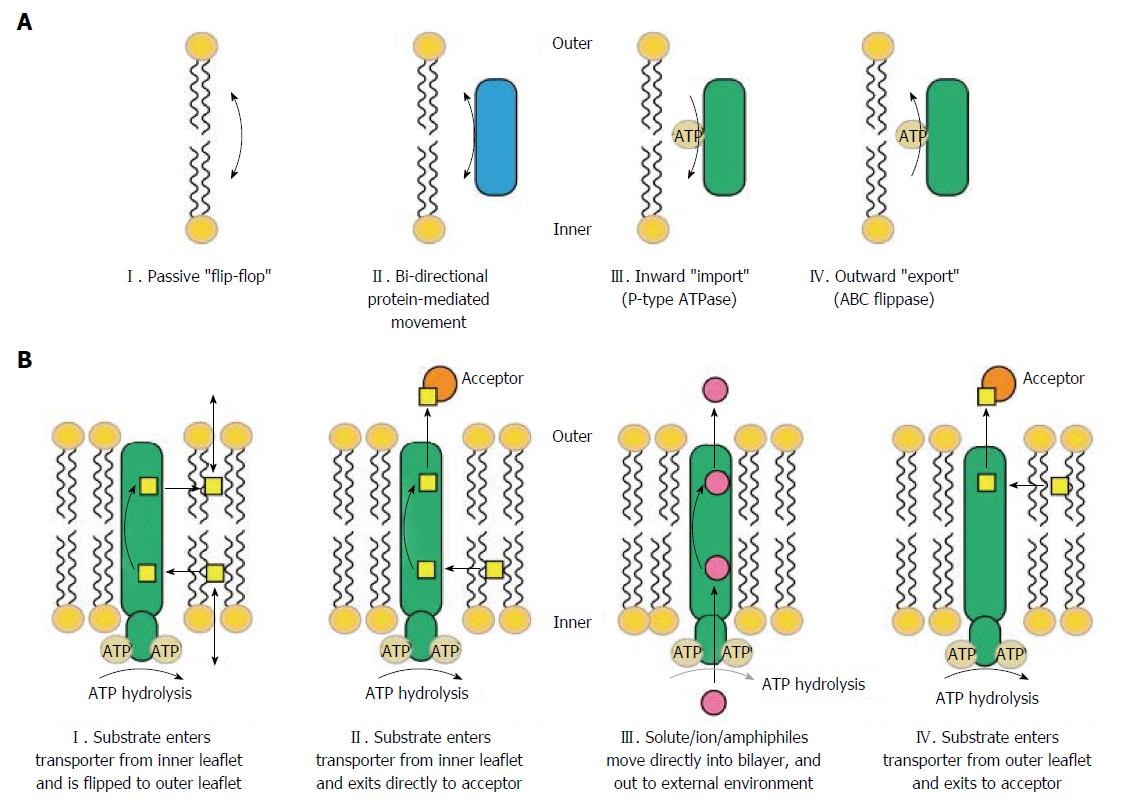Copyright
©The Author(s) 2015.
World J Gastroenterol. Nov 7, 2015; 21(41): 11862-11876
Published online Nov 7, 2015. doi: 10.3748/wjg.v21.i41.11862
Published online Nov 7, 2015. doi: 10.3748/wjg.v21.i41.11862
Figure 1 The models presented are from Tarling et al[16].
A: Lipids can move across the membrane bilayer by multiple mechanisms. Four mechanisms are proposed here: (1) membrane lipids passively diffuse or “flip-flop” from one leaflet of the bilayer to another; (2) bi-directional movement of lipids from one membrane leaflet to another is enhanced by proteins present in the membrane bilayer; (3) P-type ATPases mediate the movement of specific lipids (phospholipids) from the outer leaflet of the membrane bilayer; and (4) ABC transporters/flippases mediate the “outward” movement of specific lipids (phospholipids/cholesterol) from the inner leaflet to the outer leaflet of the membrane bilayer; B: Mechanisms of substrate recognition and transport by ABC transport proteins: (1) substrates enter the transporter from the inner leaflet and are flipped to the outer leaflet where they can exit the membrane bilayer; (2) as in (1) but the substrate exits the transporter directly to an exogenous acceptor; (3) solute/ions/amphiphiles move directly into the bilayer, through the transporter protein and out to the external environment; and (4) substrates enter the transporter from the outer leaflet and exits to an acceptor molecule.
Figure 2 Proposed mechanisms for the involvement of ABC transporters in intestinal inflammation.
- Citation: Andersen V, Svenningsen K, Knudsen LA, Hansen AK, Holmskov U, Stensballe A, Vogel U. Novel understanding of ABC transporters ABCB1/MDR/P-glycoprotein, ABCC2/MRP2, and ABCG2/BCRP in colorectal pathophysiology. World J Gastroenterol 2015; 21(41): 11862-11876
- URL: https://www.wjgnet.com/1007-9327/full/v21/i41/11862.htm
- DOI: https://dx.doi.org/10.3748/wjg.v21.i41.11862










